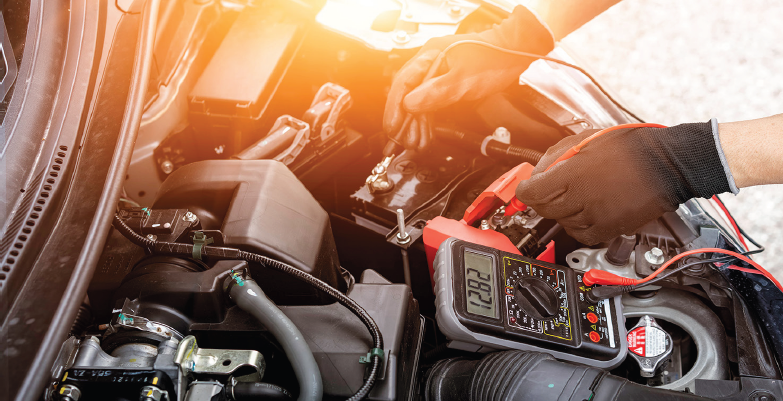When the car doesn’t start, often the first thought is… has the battery failed. However, it’s not always the battery itself that’s at fault.
What are the signs of battery failure that are a potential manufacturing defect?
• The failure would occur very early in the life of the battery (a matter of days or weeks)
• The battery would fail immediately, not gradually over time
• The battery would show a significant loss in voltage, as a cell would have stopped producing power. Each cell produces approximately 2.1V, so an immediate voltage loss of this kind very early in the battery’s lifetime could indicate a manufacturing defect in the cell (broken lead plate)
• The Cold Cranking Amps (CCA) reading would be significantly lower due to a cell failure; this will differ for each battery according to the quantity of plates within the battery.
The above points give various types of battery failure which are in fact very rare and would need to be individually investigated. Causes would potentially be an internal manufacturing fault and would therefore represent a physical fault within the production of the battery. These types of failures may typically be covered by the manufacturer’s warranty.
But, don’t these symptoms point to a flat battery? The answer is no.

If a battery “fails” due to it becoming flat, the failure symptoms are different. This is something that is often misunderstood, as the battery presents simply as a “failed” unit. At this point, a frustrated customer will often return to their point of purchase and hope to claim a replacement under the manufacturer’s warranty. This type of failure has the following symptoms:
• The failure occurs gradually over time and might not be noticed by the driver when they see that the start-stop system (where fitted) is no longer working due to the battery being below 70% charge.
• It could also be perceived through a slower cranking speed and difficult engine firing – more so in diesel vehicles
• The battery may have a relatively good voltage, but the CCA reading is much lower and unable to provide power under load. The lights may illuminate, but the battery would not be able to crank the engine.
• The voltage of the battery may have been reducing gradually over time, and if so, it may be that the corresponding CCA reading will be extremely low.
• Recharging could possibly recover the battery in the short term, but failure will occur again.
Now that these two different sets of symptoms have been categorised, you must ask: Is it the battery itself that has failed, or rather the result of poor battery care and maintenance?
Many parts and accessories on vehicles are tested routinely during service or inspection, even the coolant strength is tested to make sure it can withstand the cold weather.
The battery on the other hand, is expected to be at its best for 365 days a year, often with no consideration of whether it’s in peak condition. Therefore, it’s no surprise that a customer is shocked when they are given the news that their vehicle battery has failed – especially when there has been no warning (through periodic testing at service intervals) that this might happen!
The only way to accurately assess the state of the battery is to carry out a battery testing using a good quality and up-to date battery tester.
VARTA automotive batteries are proudly distributed by Federal Batteries and are available at Burson and JAS Oceania.


